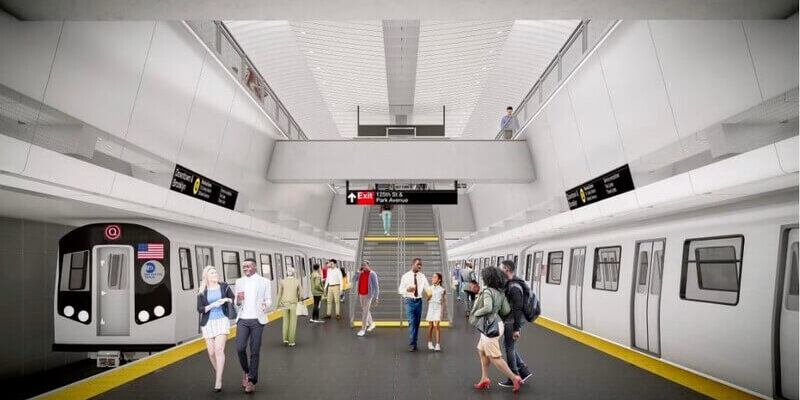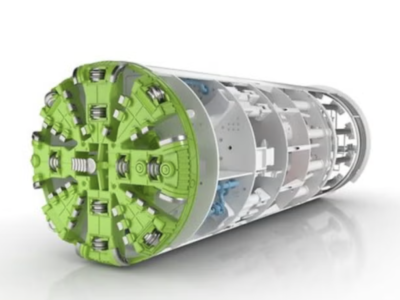
The initial announcement for tenders of Phase 2 of the Second Avenue Subway extension project, which is due to expand the subway to 125th Street in Harlem, improving transport links to East Harlem, which is one of the city’s most public transit-dependent neighborhoods, has been issued by New York’s Metropolitan Transportation Authority (MTA).
In order to advancing construction of three future stations and necessary system infrastructure, the first contract for Second Avenue Subway Phase 2 will involve critical utility relocation, laying the groundwork, whereas it incorporates lessons learned from Phase 1. Incentivizing companies to compete on both cost and time, the contract is slated to be a design-bid-build A+B contract.
Considering that MTA Construction and Development had over than US$100m save on A+B contract awards compared to estimates in 2022, additional cost containment initiatives in Phase 2 include reuse of a tunnel segment built in the 1970s from 110 Street to 120 Street along Second Avenue, early real estate acquisition, adoption of best value contract structures like A+B contracts, reduction in back-of-house and ancillary space, and close co-ordination of contracts.
The scheduled date for award of this contract is the autumn and work will begin by the end of the year.
According to Governor Kathy Hochul: “As part of my administration’s efforts to advance transit equity across New York State, the Second Avenue Subway project will expand critical public transportation service to East Harlem, creating more opportunity for residents. We remain committed to keeping this long-envisioned project moving along swiftly for East Harlem, and I am proud to see it moving one step closer to reality.”
The US$15bn of budget for critical projects in the MTA’s current capital program, which comprises of Second Avenue Subway Phase 2, will be provided by revenue from congestion pricing, while the Federal Transit Administration is the target of MTA for finalizing a funding agreement for the project and ensuring that federally required contingency for the project is in place through a Capital Plan Amendment approved by the MTA Board last week, subject to approval by the MTA Capital Plan Review Board.
Developing the Q line by around 2.4km, Phase 2 will add two new stations at 106 Street and 116 Street on Second Ave, and a direct passenger connection with the existing 125 Street subway station on the Lexington Avenue subway line. Additionally, in order to allowing transfers to the Metro-North Railroad 125 Street Station, Phase 2 is due to feature an entrance at Park Avenue.
Meanwhile, above-ground ancillary buildings to house ventilation, mechanical, and electrical equipment, as well as space for possible ground-floor retail and community uses, will be contents of each station. The expansion will serve an additional 100,000 passengers a day.
Stretching the Q line from 63 Street to 96 Street, Phase 1 of the project was New York City’s largest expansion of the subway system in 50 years and its inauguration date was January 2017.
















